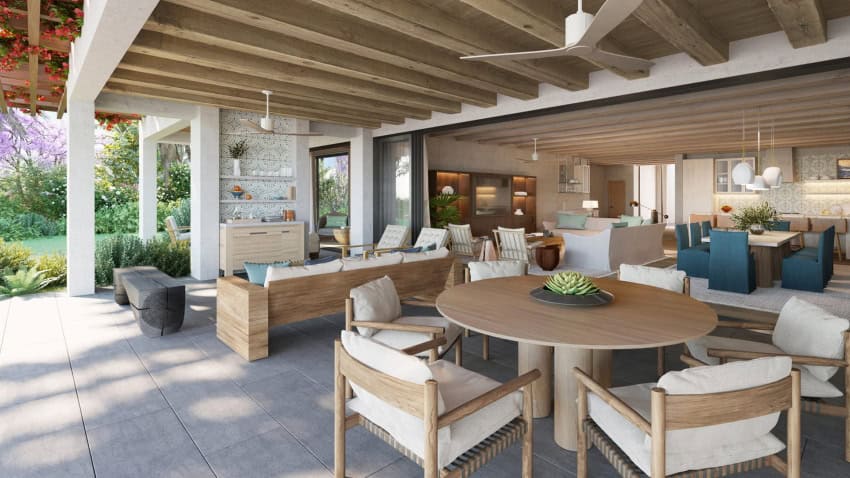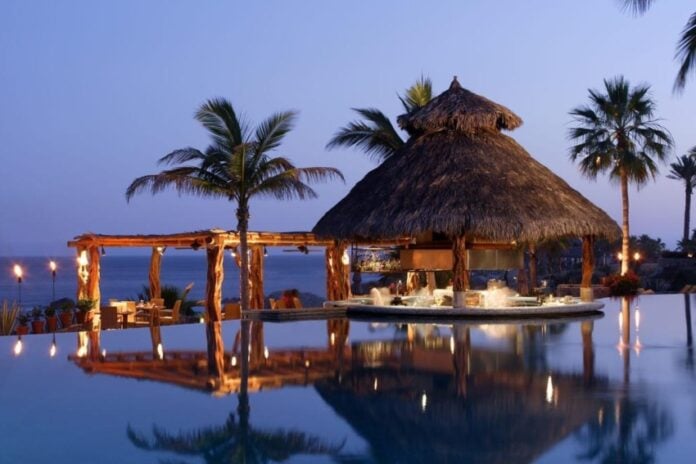The concept of genius loci comes from Ancient Rome, where it translated to the “spirit of the place.” As in, the guardian spirit who looked out for those who lived there. In modern times, however, the phrase has lost its mythological overtones and is now discussed primarily in terms of philosophy and aesthetics.
The premier exponent of this concept as it evolved in modernity was noted Norwegian architect and theorist Christian Norberg-Schulz, whose influential 1979 work, “Genius Loci: Towards a Phenomenology of Architecture,” posited that the spirit of a place — any place — emerges from the confluence of several factors, such as geography, history, climate and available materials. From these, a definable style is born, one that is unique to each city or region.

It’s an interesting idea, since almost anyone who has lived anywhere for any length of time begins to note certain architectural elements, interior design motifs and fashions that seem unique to that place, and in some intangible way, reflect its character and personality. Indeed, I’ve long been conscious of what might be called a distinctive Los Cabos style. I’d be hard-pressed to try to define it, but the core elements are unmistakable.
Signature architectural elements
The two most enduring elements of Los Cabos architecture are palo de arco and the palapa. The former style is most associated with rustic yet elegant pergolas, but it can be used to build virtually anything, from furniture to fences. Palo de arco refers to the way flexible yet sturdy branches from small Tecoma stans trees (aka palo de arco) are artfully arranged, without the need for nails to hold them together. The roots of this architectural style date back to the Indigenous cultures of Baja California Sur, and it has persisted through the Jesuit mission period and colonization into the luxury resorts of modern Los Cabos.
The palapa, a thatched-leaf roof made from palm fronds, seems more generic, since it can now be found in beachfront destinations around the country. Although actually, its origins aren’t Mexican at all. The word “palapa” comes from Tagalog, and the structures themselves originated in the Philippines and were shared with Mexico via the Manila Galleon Trade. This global trade route, which helped to connect Spain’s then far-flung colonies, was active from 1565 until 1815. Traditionally, only one or two ships per year would make the trip from Manila to Acapulco, laden with silk, spices, porcelain and other luxury goods from China and elsewhere in Asia that were purchased with Mexican silver.
Yes, Los Cabos was a frequent stop on this route. By the time the crew of these ships completed their months-long journey, they were generally sick from scurvy and running low or completely out of potable water. Thus, they would replenish themselves at the freshwater estuary in San José del Cabo and feast on local fare before sailing on to Acapulco.
These ships, known as the Nao de China in Mexico, would prove irresistible to English pirates, leading to several famous skirmishes in Cabo San Lucas Bay, where the pirates inevitably lay in wait due to the shielding cover provided by the Land’s End headland. The trade route also provided a historical basis for the use of palapas in Los Cabos, although these have only been commonly built here since the 1970s. Like palo de arco pergolas, palapas are now ubiquitous at local beaches and atop restaurants and swim-up bars at local luxury resorts.
It may seem odd that the latter properties would embrace such rustic architectural elements. Still, they contribute mightily to the inimitable style of laid-back luxury that is unique to Los Cabos. Doubtless, they even helped to inspire it. Norberg-Schulz would have certainly thought so, since he argued that these vernacular architectural elements are an integral part of what creates place identities.
Fashion and décor

Geography and climate, two factors Norberg-Schulz noted as crucial in the establishment of a genius loci, have obviously influenced interior design in Los Cabos. The municipality’s 350 days of sunshine annually have made possible the seamless transition between indoor and outdoor spaces, aided by open floor plans and retractable walls and doors for breezy, uninterrupted flow. Palettes featuring earthy and cool colors also reflect the area’s unique geography, in which mountains and dramatic desert terrains are bounded by the Pacific Ocean and the Sea of Cortés.
The coastline, specifically Los Cabos’ 125 miles of beautiful beaches, is the most notable factor when it comes to local fashion. Beach-friendly attire, for example, is a must-pack for vacationers or must-purchase upon arrival. But just as Los Cabos’ interior design often, as befits a Mexican destination, boasts trademark accents such as Talavera tiles and Mexican-sourced ceramics, textiles and furnishings, regional beach-style fashions among locals and long-time visitors also have an unmistakably Latin flavor.
The annual Los Cabos Fashion Week, for instance, is organized by the Fashion Designers of Latin America, and has been hosted by bastions of casually elegant resort wear like Esperanza, Solas and ME Cabo by Meliá. The latter’s pre-Hurricane Odile White Parties at Nikki Beach were perhaps the best expression of this style, a mix of breezy dresses and stylish guayaberas, poolside cover-ups and collared linen shirts, sunglasses and sandals.
But it’s not just design or fashion that defines the Los Cabos style. There’s a bit of attitude involved as well, the relaxed anything-goes embrace of life at Land’s End, the spirit of the place once captured by such Los Cabos-originated brands as No Bad Days and Die Trying. It’s hard to capture in words, but it would have been recognized by Norberg-Schulz as the genius loci that emerges when geography, climate and culture collide.
Chris Sands is the former Cabo San Lucas local expert for the USA Today travel website 10 Best and writer of Fodor’s Los Cabos travel guidebook. He’s also a contributor to numerous websites and publications, including Tasting Table, Marriott Bonvoy Traveler, Forbes Travel Guide, Porthole Cruise, Cabo Living and Mexico News Daily.
